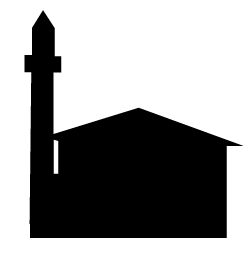Pirveli Maisi
Pirveli Maisi Mosque
The mosque in Pirveli Maisi (lit. “May First,” in honor of International Workers’ Day) dates to the same period as Kvirike and Makhalakidzeebi, and shares their traditional architectural details, including an abundance of exuberant vernacular wood carvings. A 1990s repainting of the mosque highlights the various ornaments in dreamy pastel-shaded colors, making it one of the most cheerful mosque interiors in the region. Each of its column capitals features multiple hand-carved designs, some of which are entirely unique. Bands of intricate tulip, vine, braid, and geometric motifs decorate beams supporting the balcony and mezzanine. The original minbar (usually one of the most intricately carved elements of an Adjaran mosque) was likely damaged at some point during the Soviet period, leaving only two panels of original geometric carvings in the back right corner. Remaining panels have since been replaced with plain painted boards. The ceiling medallion, perhaps designed or modified in the later nineteenth century, is set within an unusual arabasque latticework frame. The only applied carvings at the mosque are those on the door, which is an early twentieth century replacement for the lost original. Despite its architectural significance and a regular congregation, the village has been unable to organize a renovation of their mosque since its last upgrades in the early 1990s.
DISTRICT : Keda
LOCATION : 41°34’47.6”N 42°12’42.5”E
POPULATION : 525; greater Pirveli Maisi 1213
CONSTRUCTION DATE : 1865 (hijri 1281)
RENOVATION DATE(S) : early 1990s
CRAFTSMAN : Bashusta Ali Kilaoghli
MINARET : No; one made of stone/brick demolished c. 1930

